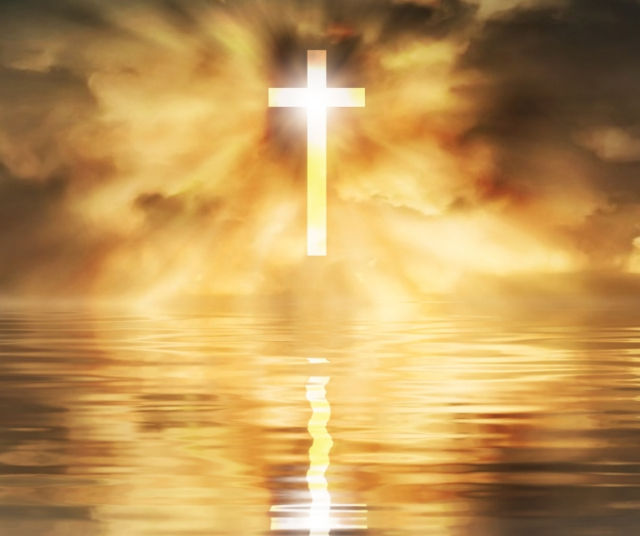Holy Week in Mexico is a time of deep reflection, religious fervor and vibrant cultural tradition. During this week, which precedes the celebration of the Resurrection of Jesus Christ on Easter Sunday, Mexican communities immerse themselves in a series of events and activities ranging from religious ceremonies to artistic manifestations and popular festivities.
Spiritual Preparation: Lent and Friday of Sorrows
Holy Week in Mexico begins long before the events that take place during the last week of Lent. Lent, a forty-day period of penance and reflection, begins on Ash Wednesday and culminates in Holy Week. During this time, many Mexicans participate in spiritual practices such as fasting, prayer and charity, as a preparation for the celebration of the Passion, Death and Resurrection of Jesus Christ.
A notable event during Lent is the Friday of Sorrows, celebrated the Friday before Palm Sunday. On this day, the pain of the Virgin Mary for the death of her son Jesus is commemorated. Communities organize processions, theatrical performances, and religious events to honor this moment, marking the beginning of Holy Week with solemnity and devotion.
Palm Sunday: The Triumphal Entry of Jesus into Jerusalem
Holy Week in Mexico officially begins with Palm Sunday, which commemorates the triumphal entry of Jesus into Jerusalem. On this day, the faithful go to churches with palm branches in their hands to be blessed during mass. Subsequently, processions are held where participants carry the blessed palms as a symbol of adoration and devotion.
In many communities, intricate rugs are made from dyed sawdust and other materials to decorate the streets where the procession passes. These colorful rugs, often depicting biblical scenes or religious images, are a visual testament to the creativity and fervor of the community during Holy Week.
The Living Representation: Via Crucis and Processions
Throughout Holy Week, living representations of the Way of the Cross, recreating the stations of Jesus' journey to the crucifixion, are common events throughout Mexico. These performances involve members of the community acting as biblical characters, performing key scenes of the Passion of Christ in public places or inside churches.
Processions are an integral part of Holy Week in Mexico. During these solemnities, religious images are carried on litters through the streets, accompanied by sacred music, prayers and the participation of the community. Processions can be solemn and reflective, or full of fervor and devotion, depending on the region and local traditions.
Holy Thursday: The Last Supper and the Washing of the Feet
Holy Thursday commemorates the Last Supper of Jesus with his apostles, where he instituted the Eucharist and the sacrament of foot washing. During this day, churches perform the evening mass of the Lord's Supper, which includes the symbolic representation of the washing of feet as a gesture of humility and service, following the example of Jesus washing the feet of his disciples.
In some communities, visits to seven temples are carried out during the night of Holy Thursday. The faithful tour different churches to pray and reflect, remembering the seven key moments of the Passion of Christ.
Good Friday: The Day of the Passion and Death of Jesus
Good Friday is the most solemn day of Holy Week, marked by the commemoration of the Passion and Death of Jesus on the cross. Churches perform the Liturgy of the Passion, which includes the reading of the gospels that recount the events leading up to Jesus' crucifixion. Many communities also carry out the representation of the Descent, which symbolizes the lowering of the body of Christ from the cross and its placement in the tomb.
In some regions of Mexico, the Procession of Silence takes place on the night of Good Friday. This procession is characterized by its reflective and solemn atmosphere, with participants dressed in black and carrying candles, as they walk through the streets in silence in memory of the death of Jesus.
Holy Saturday: Easter Vigil and Waiting for the Resurrection
Holy Saturday is a day of waiting and anticipating the Resurrection. During the night, the Easter Vigil is celebrated, one of the most important liturgies of the liturgical year. The Easter Vigil begins in darkness with the lighting of the new fire, symbolizing the light of Christ that conquers the darkness. The Easter light procession illuminates the church while the faithful's candles are lit.
The Easter Vigil includes the reading of biblical passages that tell the story of salvation, from creation to the Resurrection. Holy water is blessed and distributed, renewing the baptism of the faithful. The Vigil culminates with the joy and celebration of the Resurrection of Jesus, marking the beginning of the Easter season.
Easter Sunday: Celebration of the Resurrection
Easter Sunday, known as Resurrection Sunday, is the climax of Holy Week. Churches are filled with joy and celebration, with special masses that highlight the victory of life over death. In many communities, Easter processions are held, where "Hallelujah" is sung as an expression of joy for the Resurrection of Jesus.
After mass, families gather to enjoy special meals and share moments of joy. Traditional Easter eggs, decorated and often filled with candy, are exchanged as a symbol of new life and renewal.
Cultural and Religious Meaning of Holy Week in Mexico
Holy Week in Mexico goes beyond religious celebrations, also being a reflection of the rich cultural heritage and diversity of the country. Traditions vary significantly from one region to another, incorporating indigenous elements, European influences and local practices that give the celebration a unique character.
From theatrical performances and processions to colorful popular festivities, Holy Week in Mexico is an amalgamation of faith, devotion and artistic expressions. The active participation of the community, the sense of unity and the deep connection with spirituality make this celebration a unique and moving experience.
